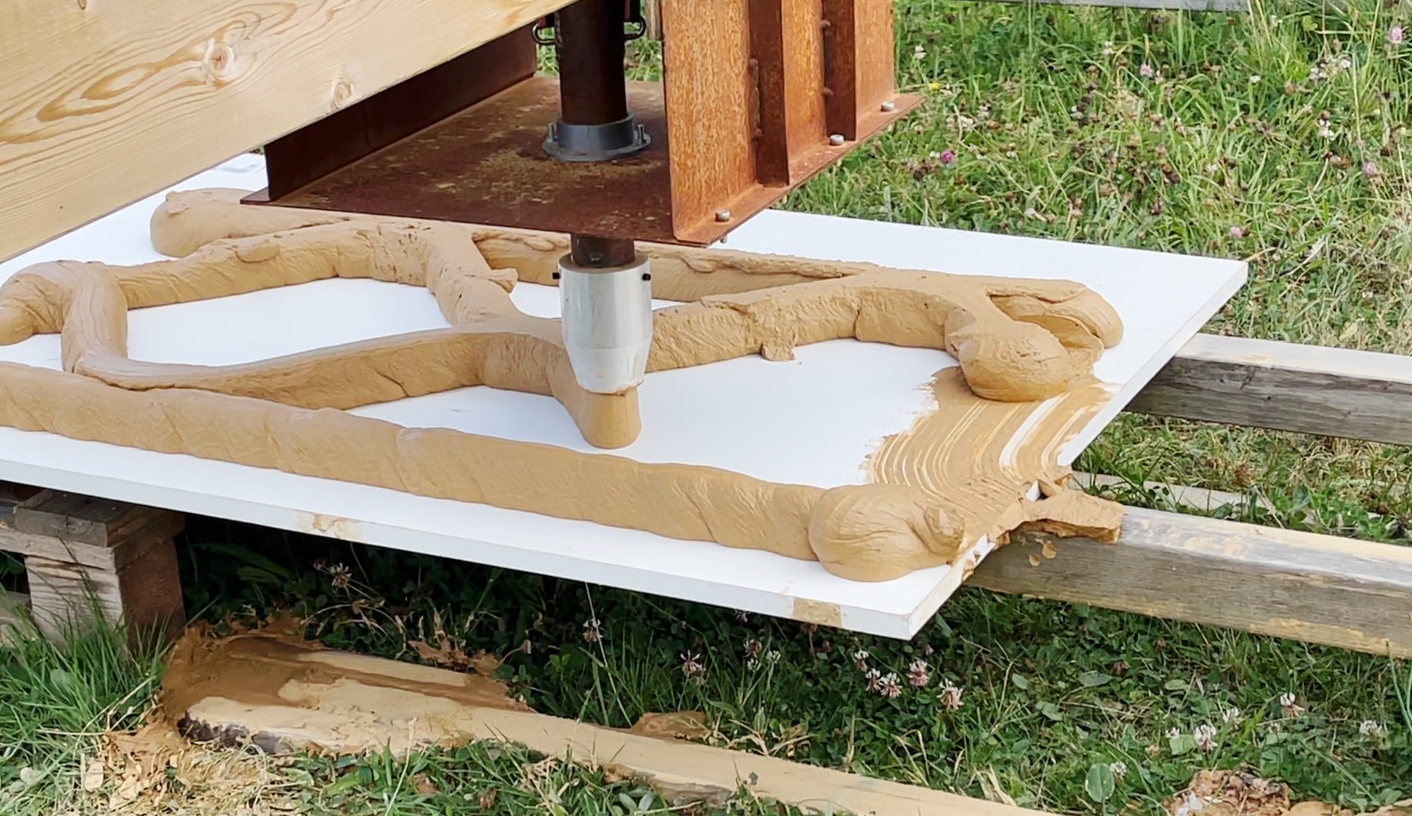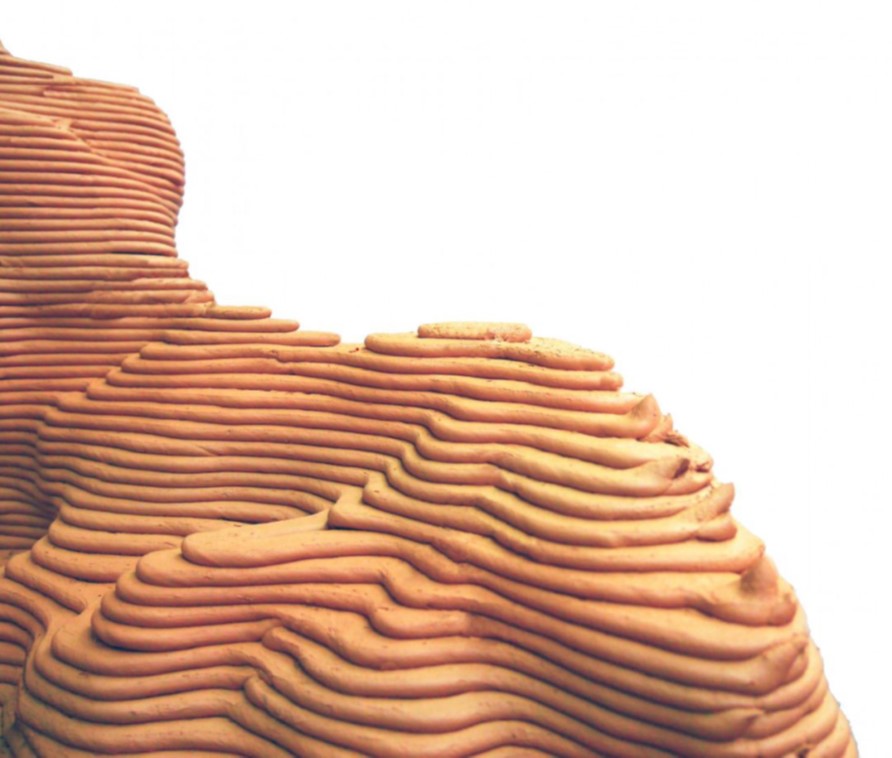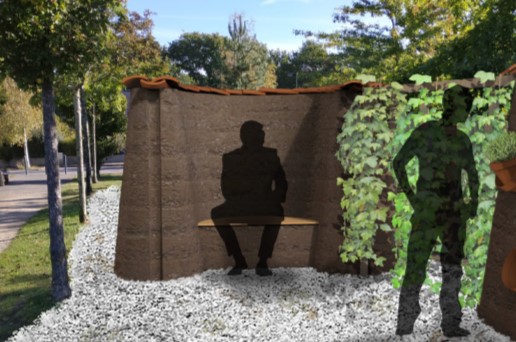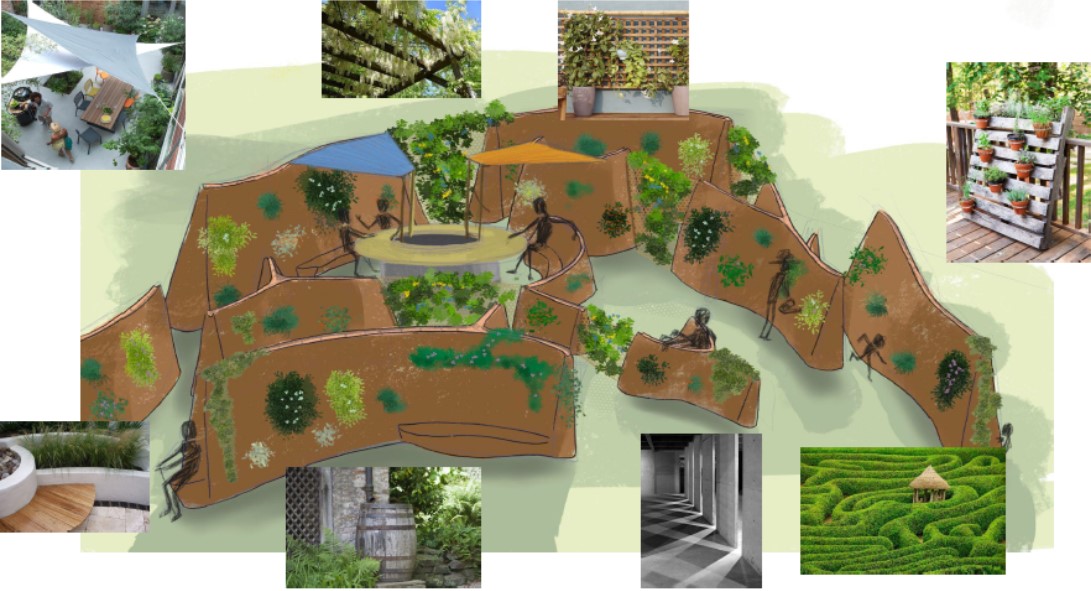TerraCool
Basic information
Project Title
Full project title
Category
Project Description
The aim of "TerraCool project " is to create island of freshness made by 3D printing with local raw earth and recycling waste everywhere in the world. The main issues are :
- The creation of new urban amenities such as cool islands designed to make the city habitable in the face of global warming and the increase in intensity and duration of heat waves.
- The ecological production of built environments through a "low-tech" approach based on local materials and an open source 3D printing.
Geographical Scope
Project Region
Urban or rural issues
Physical or other transformations
EU Programme or fund
Which funds
Description of the project
Summary
TerraCool is a concept as well as a research-action project aiming at creating 3d-printed raw earth oasis of coolness to help cities cope with heat waves, and to explore and study their qualities, aesthetics, efficiency, uses and appropriation by inhabitants. These temporary microarchitectural cooling devices will be based on the inertia of the walls, the vaporization of water, the creation of shades, the installation of vegetation, etc. They are intended to be conceived with a co-design methodology and to be fully adapted to the people who will use them and the places in which they will be located (in public space or near buildings with vulnerable people such as schools or retirement homes, etc.).
This research-action project combines the skills of Nantes-based researchers in robotics and processes with those in design, architecture and sustainable urban. It is at the crossroads of two areas of expertise on these two issues and relies on previous research projects such as the Coolscapes project on spatio-climatic devices and the EcoBioprinter project.
TerraCool microarchitectures will be built with an innovative construction process using 3D-printing and based on ancestral techniques, with a fully natural, recyclable, and carbon-neutral material: raw earth.
TerraCool will demonstrate:
- The technical feasibility of printing raw earth structures in public space integrating various cooling devices (for example vegetation);
- The formal/aesthetical interest of using this technique to imagine attractive and original forms and shapes;
- The capacity of these raw earth structures to generate new inclusive uses of public space and to be appropriated by the citizens;
-The interest of these raw earth structures to offer spaces of comfort and thermal restoration during episodes of high heat.
3D printing is booming with extraordinary realization capabilities, the idea of open-source project TerraCool takes advantage of this cheap and ecological technology with raw-earth.
Key objectives for sustainability
TerraCool tackles ecological challenges related to urban well-being and construction:
- Creating sustainable cities, fighting urban heat islands, preserving the health and well-being of city dwellers, urban design based on passive low-tech solutions.
- Developping sustainable and efficient construction processes, using local and renewable materials like raw earth, producing ephemeral and circular buildings, providing open source solutions.
At the crossroads of these two challenges, TerraCool offers solutions to easily and ecologically build temporary (or more permanent) urban oasis of coolness for European cities in the summer.
Our technique saves a lot of construction costs and energy by producing buildings with only raw earth printed layer by layer (as many ancestral earth construction techniques) and a lattice structure, and without hydraulic binder. This additive manufacturing process allows for less material usage: we use just the amount of material we need.
TerraCool created construction using entirely reusable, recyclable materials taken from the local terrain with an ecological footprint close to zero.
The composition of the earth mixture for the 3D printer and the architectural design are to be created in direct response to the local climatic conditions. This means that thermal performances are optimised.For all these reasons, TerraCool microarchitectural buildings will allow to reach excellent insulation performances and a very low carbon footprint.
The goal of this project is to establish a circular economy, or one which avoids waste and limits resource consumption by recirculating existing materials. In the case of earth, a circular economy means recapturing and reusing existing earth and waste recycling however possible, as well as limiting the creation of new 3d printable materials. The actions support the circular economy in each step of the value chain – from production to consumption.
Key objectives for aesthetics and quality
The key objectives of TerraCool in terms of aesthetics and quality of experience beyond functionality are:
- The physical thermal confort of raw earth, which has natural thermal inertia properties, with significant winter heating and summer cooling. . Additionally, due to the ability to absorb and evaporate, earth offers a self-regulating humidity environment, promoting a healthy indoor climate.
- The overall restorative experience (in the psychological sense) of freshness oasis in summer, which can become strong markers for cities, cf. examples of the numerous spatio-climatic devices articulating the aesthetic dimension and well-being.
- Creating a new positive image associated with the aesthetics of earth in urban spaces, as a noble material with multiple ecological properties and constructive capacities, enhanced by 3d-printing techniques allowing to created unique shapes and designs. While earth has been used in vernacular architecture for thousands of years, today it faces the stigma of being associated with traditional or underdeveloped areas. The coolness microarchitectures will have to appear singular yet coherent in the urban landscape, with the same visual style both inside and out. It will feel natural and warm, with gentle colourings and a tactile surface finish that is friendly to the touch.
At the crossroads of these issues: new urban experiences and a new aesthetic of urban developments based on their material and thermal qualities (contact with the earth, vegetation, water, natural cooling).
Key objectives for inclusion
The key objectives of TerraCool in terms of inclusion are:
- Oasis of freshness increase the quality of urban public spaces in summer, encourage sociability and inclusion by allowing all generations to share restorative uses of the city (children playing with water, elderly people enjoying cool moments), which is affordable and can be easily built in all neighbourhoods without privileging the richest;
- Design and construction by 3D printing in earth can be a participatory process that rely on the knowledge of the inhabitants and increase their capacity to act, they can be inscribed in diverse social contexts. Co-designing microarchitectures can be reached in various ways, with architecture and design participatory tools and methods as well as with user-friendly digital tools enabling people to conceive and visualize their project.
- TerraCool will seek to involve city dwellers in the research-action process. Visitors will be able to see the “research machinery” at work in the public space: the EcoBioPrinter 3D printing robot and the Coolscapes climate cart. They will be able to appropriate the built devices, inhabit them or even transform them since the earth is a malleable material. Through the questions they will raise, the devices implemented will make it possible to communicate with the public and to explain the challenges of the project, in terms of frugal construction with the earth and sustainable urban development.
At the crossroads of these issues: urban developments built with, by and for inhabitants of all social classes and generations to increase their well-being in the city in summer and their sense of belonging to the community.
Physical or other transformations
Innovative character
TerraCool is a concept as well as a research-action project aiming at creating 3d-printed raw earth oasis of coolness to help cities cope with heat waves, and to explore and study their qualities, aesthetics, efficiency, uses and appropriation by inhabitants.
By building with a cheap 3d printing process that use local earth rather than concrete, for instance, you eliminate the massive energy requirements needed for cement manufacture, you vastly reduce logistical impacts because raw earth is sourced locally next to the implementation, you reduce waste from other local construction projects by using the existing material that would normally be dumped, and you create a temporay structure, that can be recycled easily after demolition or returned to the ground without any treatment.
The construction of the islands is 100% natural and 100% recyclable materials, which can be used to actively adjust the climate and provide the perfect material and touch that match the contemporary architecture and design in different urban cities.
TerraCool allows to be the perspective of solutions to build easily and ecologically urban cool islands for European cities in summer.
It allows to experiment new urban experiences and a new aesthetic of urban developments based on their material and thermal qualities (contact with the earth, vegetation, water, natural cooling).
These urban facilities are built by 3d printing process with, by and for the inhabitants of all social classes and generations to increase their well-being in the city in summer and their sense of belonging to the community and to raise awareness of new construction methods with low ecological impact and to implement a circular economy.




